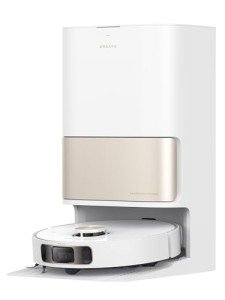Understanding Floor Robots: The Future of Home Cleaning
Over the last few years, technological developments have significantly transformed the landscape of family cleaning. Amongst the most noteworthy innovations is the floor robot, a device that has actually rapidly gained appeal for its benefit and performance. This article intends to check out the numerous aspects of floor robots, their functionality, advantages, popular models, and some frequently asked questions to assist customers make informed decisions.
What is a Floor Robot?
A floor robot, commonly referred to as a robotic vacuum, is an automated device developed to navigate floorings and remove dirt, dust, and debris. Unlike traditional vacuum, floor robots operate autonomously, offering a hassle-free cleaning experience. These smart machines use sensing units, mapping technologies, and advanced algorithms to tidy various surface areas, including hardwood, tile, and carpet.
How Do Floor Robots Work?
Floor robots operate through a combination of software and hardware components. Here are the key features that enable their performance:
1. Sensing units
- Barrier Detection: Floor robots have integrated sensors that help them spot challenges, permitting them to navigate around furnishings and prevent falls.
- Cliff Sensors: These prevent the robot from dropping stairs or ledges by recognizing changes in elevation.
2. Navigation and Mapping
- Visual Mapping: Some innovative designs use video cameras and laser technology to create in-depth maps of the cleaning location.
- Synchronised Localization and Mapping (SLAM): This technique assists the robot track its area and effectively prepare its cleaning route.
3. Cleaning Mechanisms
- Suction Power: Most robotic vacuums utilize a suction system to record dirt and dust, which is then kept in an onboard dustbin.
- Brushing Systems: Many models come geared up with rotating brushes or mops for boosted cleaning capabilities, especially on carpets or hard surfaces.
4. Smart Features
- Connectivity: Many floor robots support Wi-Fi connection, enabling users to manage them via smartphone apps or smart home systems.
- Scheduling: Users can arrange cleaning times, ensuring their homes are clean even when they're not there.
5. Self-governing Charging
- Self-Docking: Most robots automatically go back to their charging station once their battery runs low, guaranteeing they're constantly prepared to tidy.
Benefits of Using a Floor Robot
The adoption of floor robots features many benefits that make them appealing to users:
1. Convenience
Floor robots can clean while users address other jobs, allowing for multitasking and time-saving.
2. Increased Efficiency
Robotic vacuums typically cover more ground in less time compared to standard techniques, thanks to their methodical cleaning patterns.
3. Constant Cleaning Routine
Users can set up routine cleanings, guaranteeing that their homes remain clean without requiring daily intervention.
4. Availability
Robotic vacuums can quickly access hard-to-reach areas, such as under furnishings or in tight areas.
5. Advanced Features
Lots of models come geared up with features like voice control and app combination, enhancing functionality and availability.
Popular Floor Robots
When thinking about a floor robot, various brand names and designs accommodate various requirements and budget plans. Here's a quick summary of some leading options:
| Brand | Model | Key Features | Price Range |
|---|---|---|---|
| iRobot | Roomba i7+ | Smart mapping, self-emptying dock | ₤ 600 - ₤ 800 |
| Roborock | Roborock S7 | Sonic mopping, challenge avoidance | ₤ 500 - ₤ 700 |
| Neato | Neato D7 | D-shape style, advanced suction | ₤ 600 - ₤ 800 |
| Ecovacs | Ecovacs Deebot T8 | Mopping function, advanced mapping | ₤ 600 - ₤ 800 |
| Shark | Shark IQ Robot | Self-emptying base, home mapping | ₤ 400 - ₤ 600 |
(Note: Prices might differ based on merchants and ongoing promos.)
Often Asked Questions (FAQs)
1. Are floor robots effective on carpets?
Yes, most contemporary floor robots are developed to tidy various surface areas, including carpets. Models with strong suction and rotating brushes are especially effective at choosing up family pet hair and ground-in dirt.
2. How often should I run my floor robot?
This depends upon your household's needs. For homes with animals or high foot traffic, day-to-day or every other day cleaning might be helpful. For quieter families, running the robot as soon as a week might be adequate.
3. Can I control my floor robot remotely?
Many floor robots feature smart device apps that enable users to manage their devices remotely, schedule cleansings, and display performance.
4. Do I need to empty the dustbin regularly?
Many robots require routine emptying of the dustbin, especially in homes with animals or heavy soil. Nevertheless, some models provide self-emptying capabilities, which minimize user involvement.
5. Are floor robots appropriate for all kinds of floor covering?
A lot of floor robots are effective on various surface areas, including wood, tile, and low-pile carpets. However, some might carry out much better on specific surface areas, so it's necessary to select a model fit to your home's needs.
As families continue to accept technology, floor robots have actually become vital cleaning companions, supplying benefit, performance, and advanced features. Understanding their performances, benefits, and available models allows customers to choose the best floor robot to fulfill their specific cleaning needs. By buying best robot vacuum cleaner , property owners can guarantee their living areas remain clean and comfortable with minimal effort.

